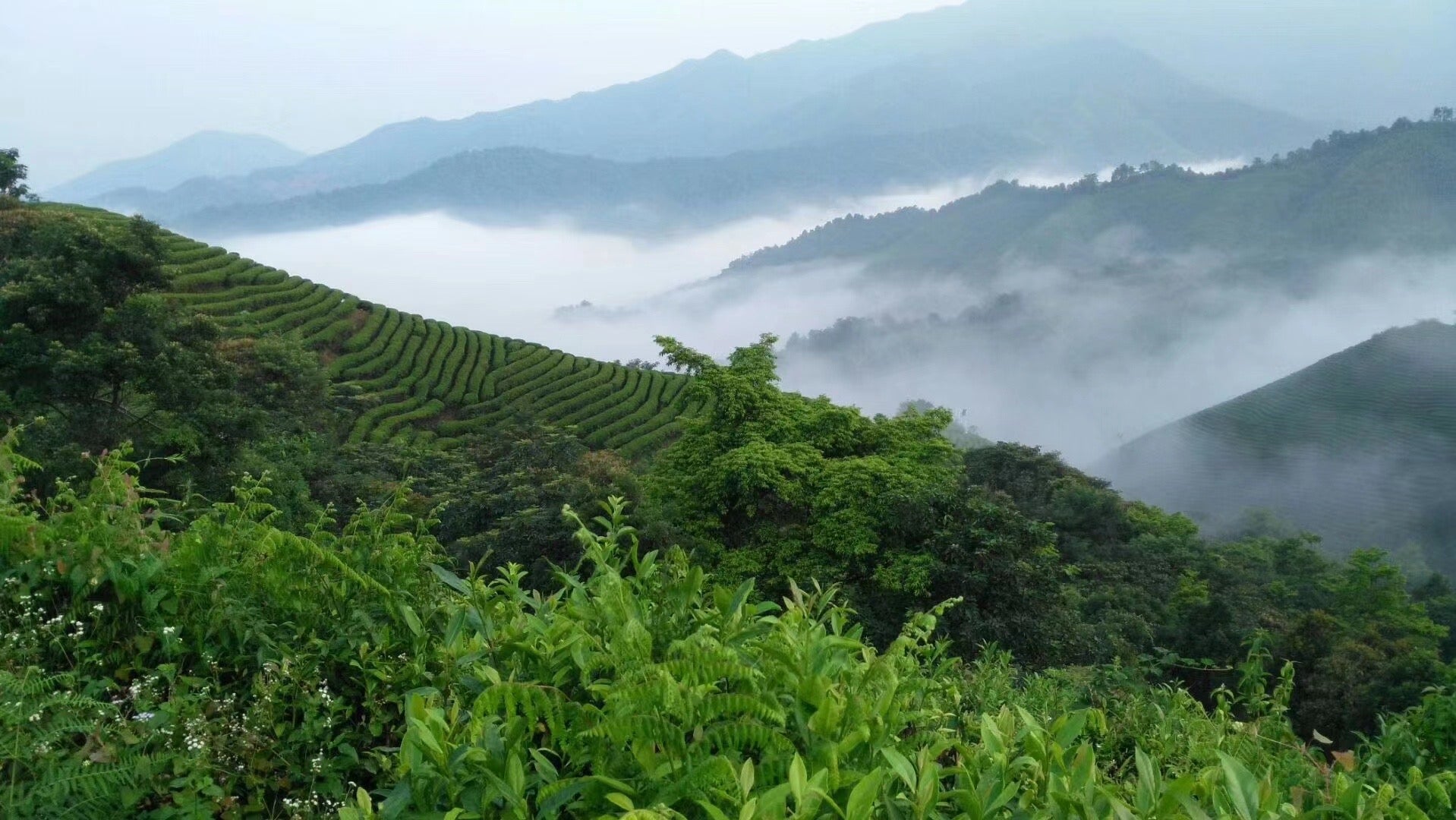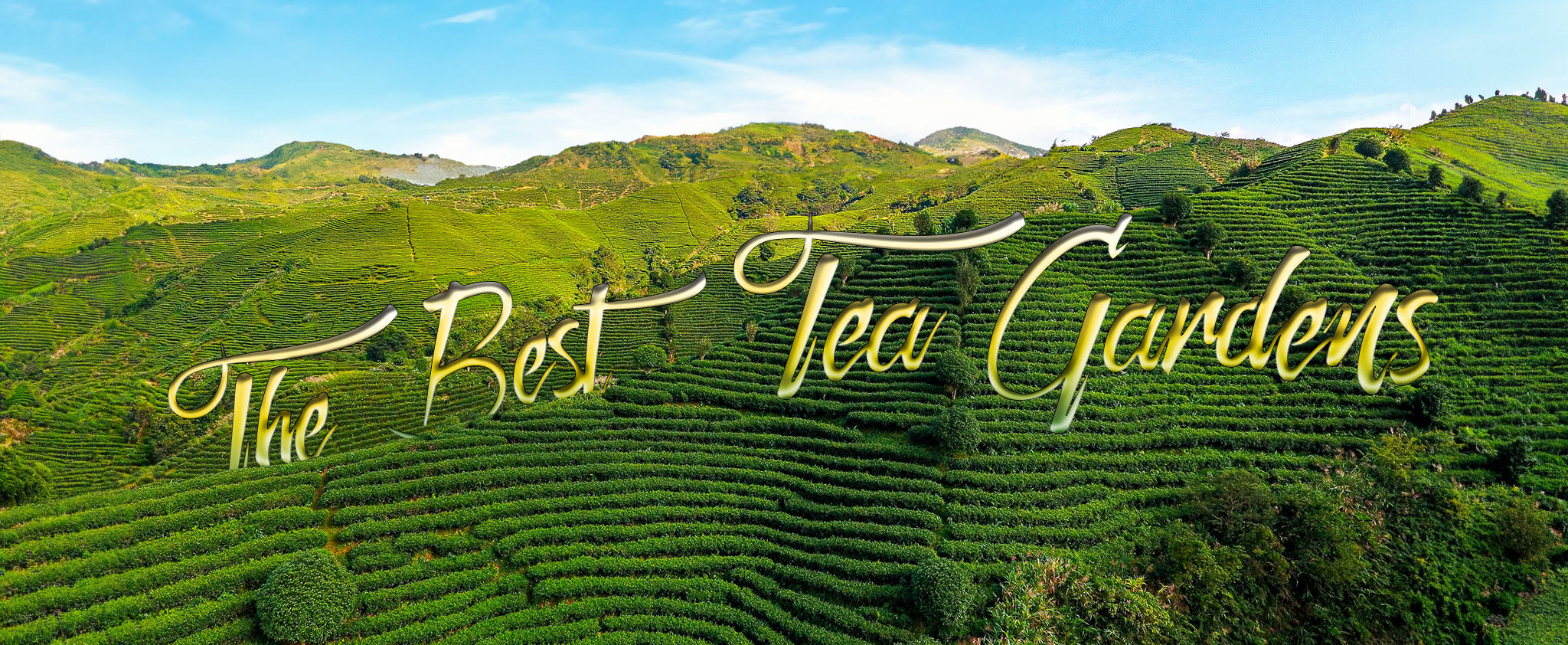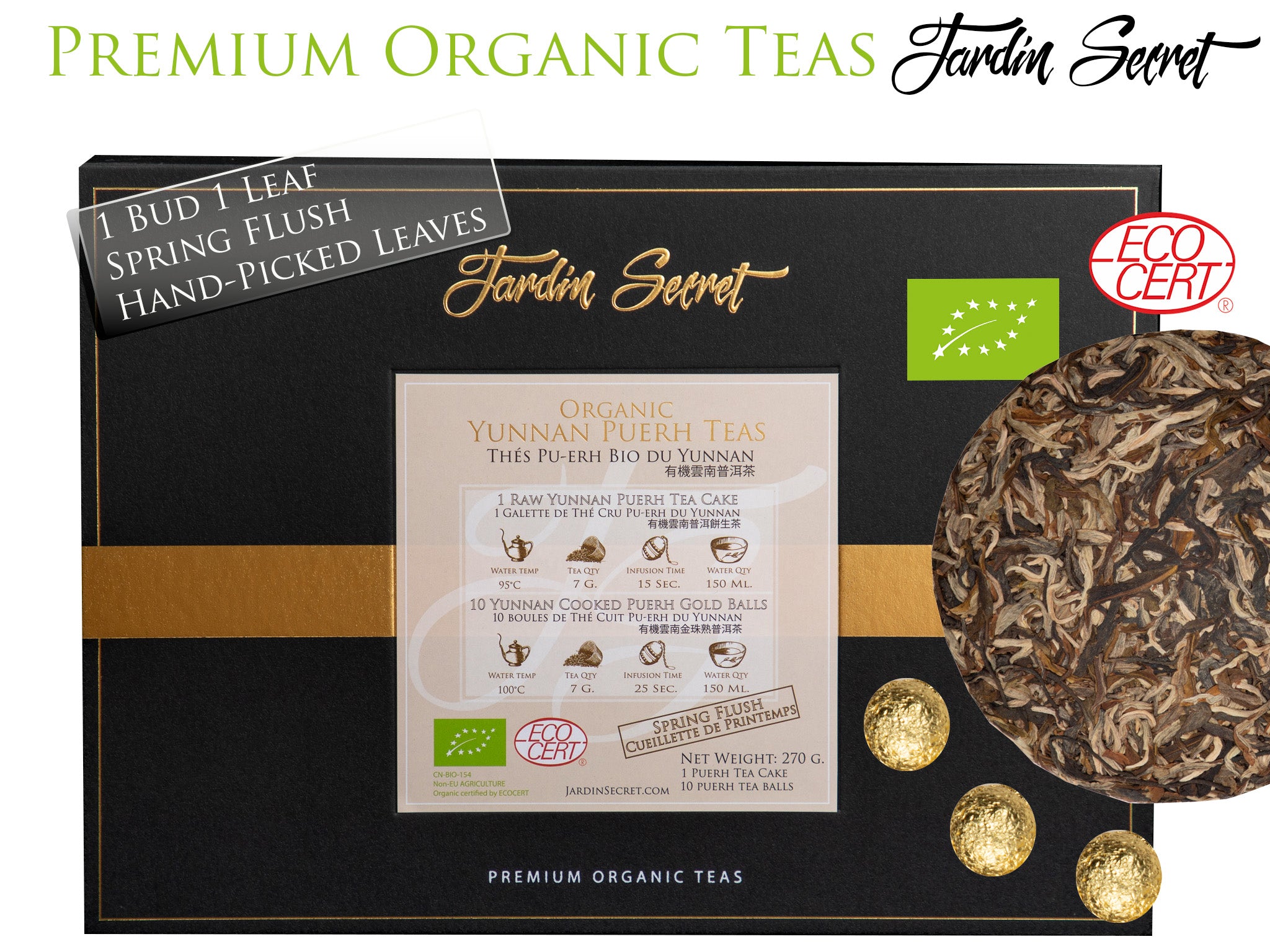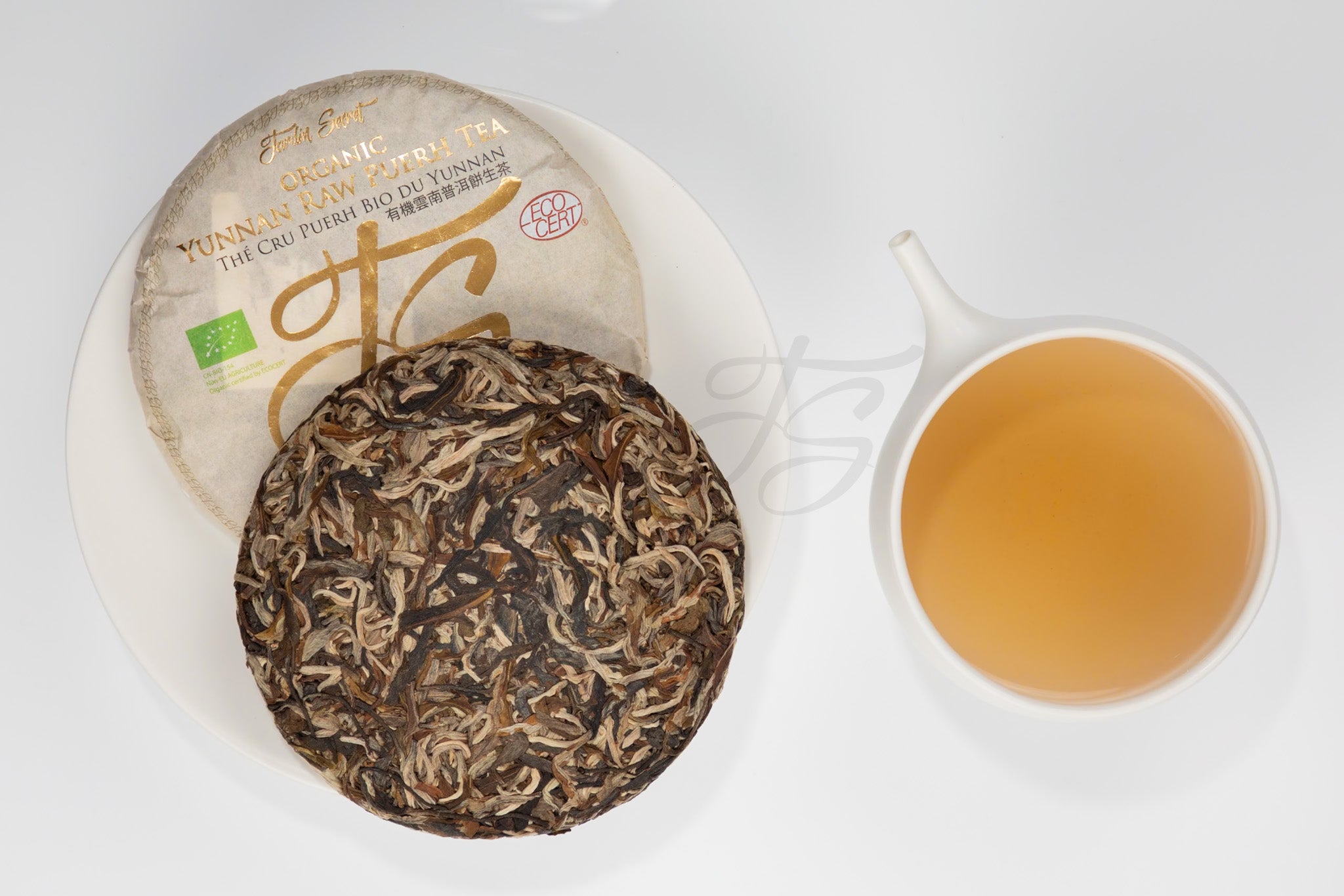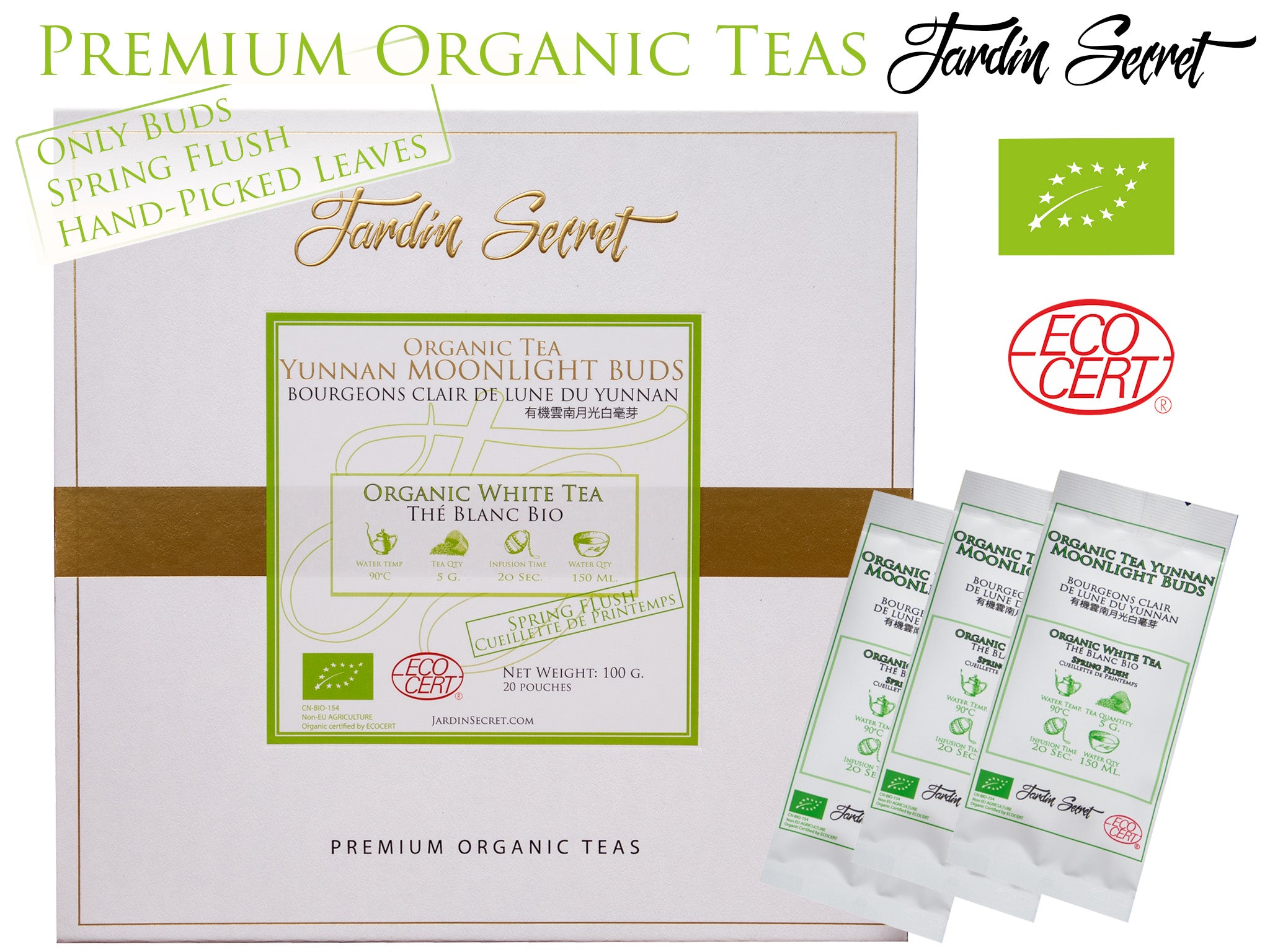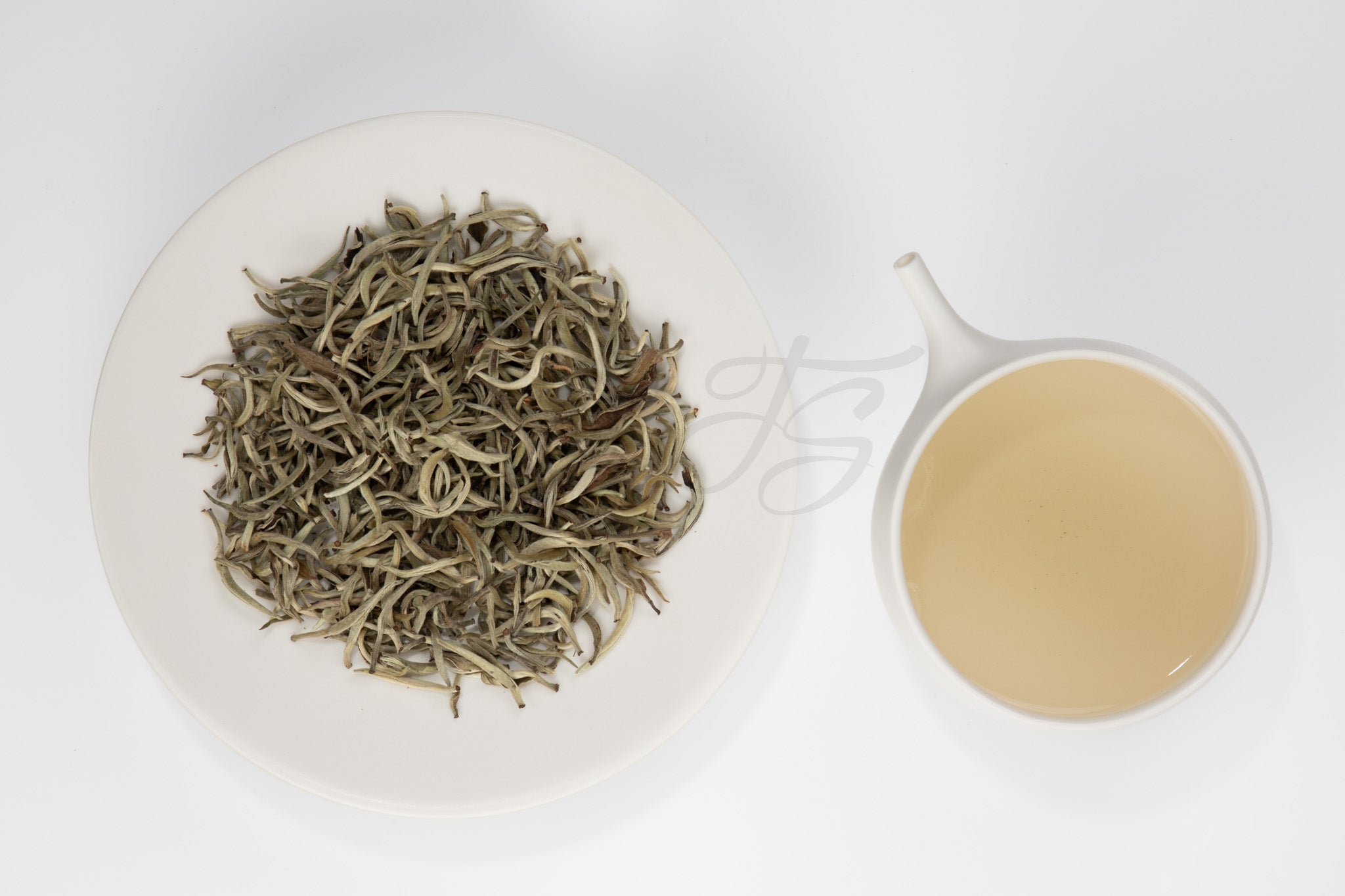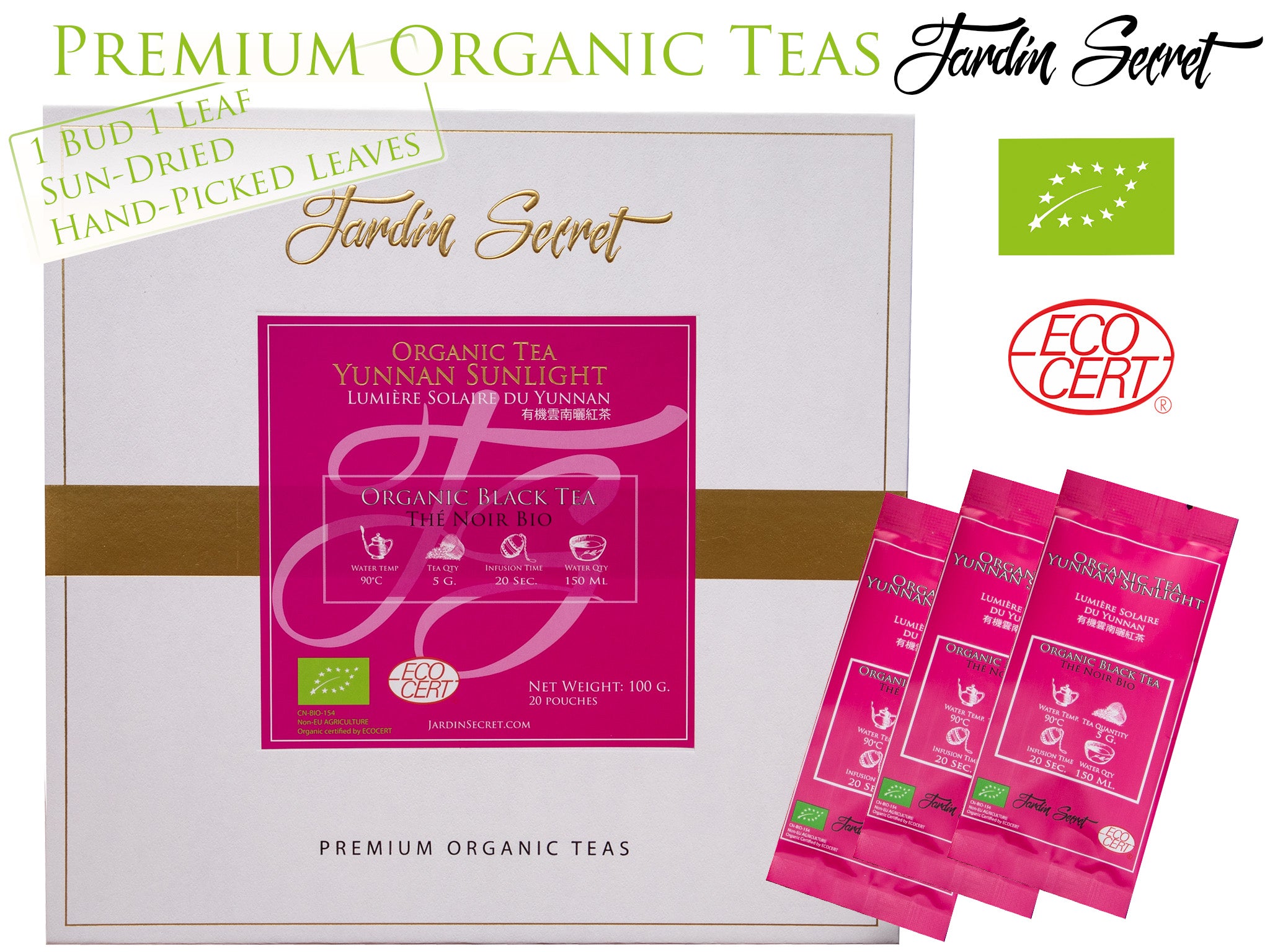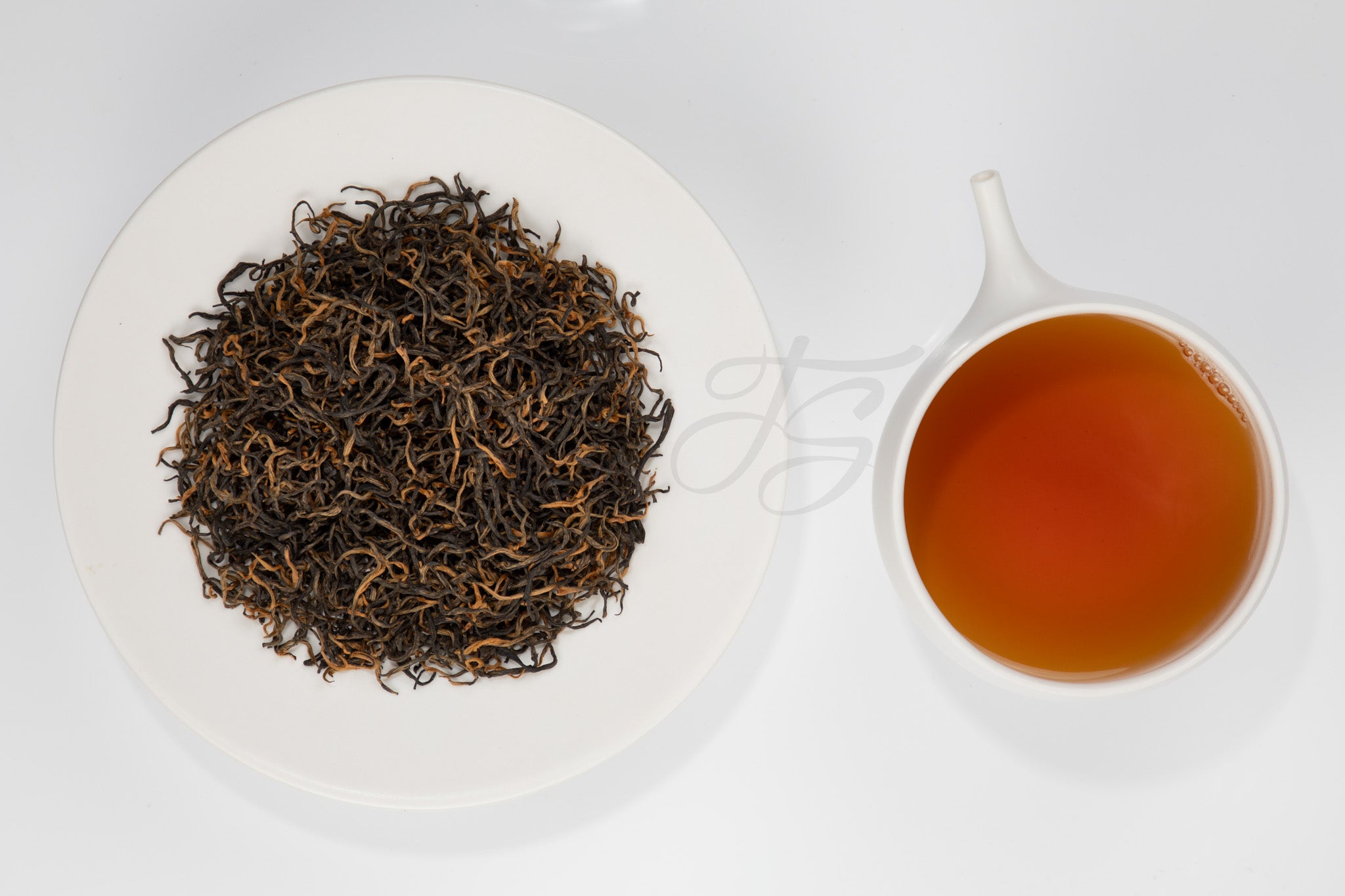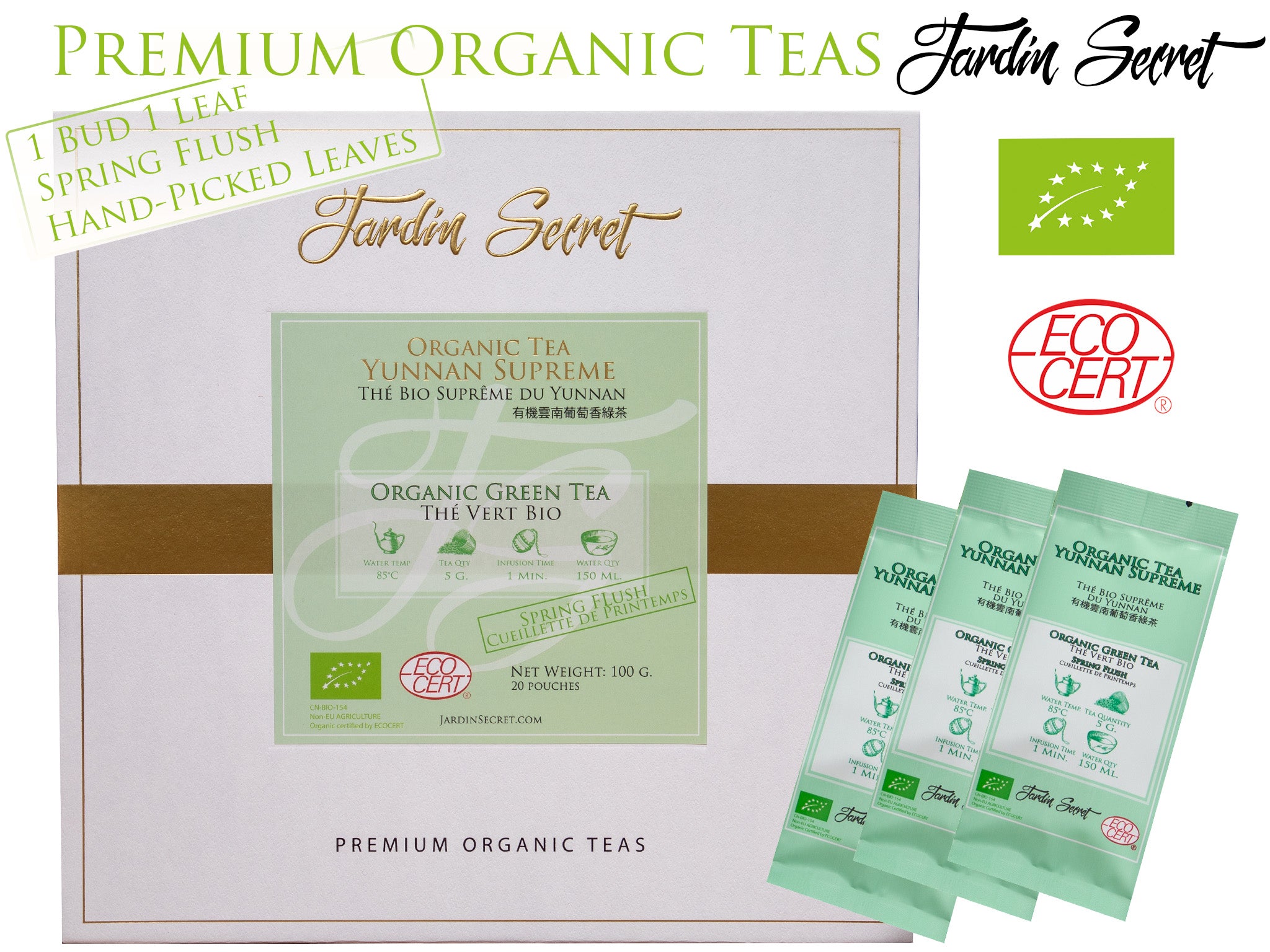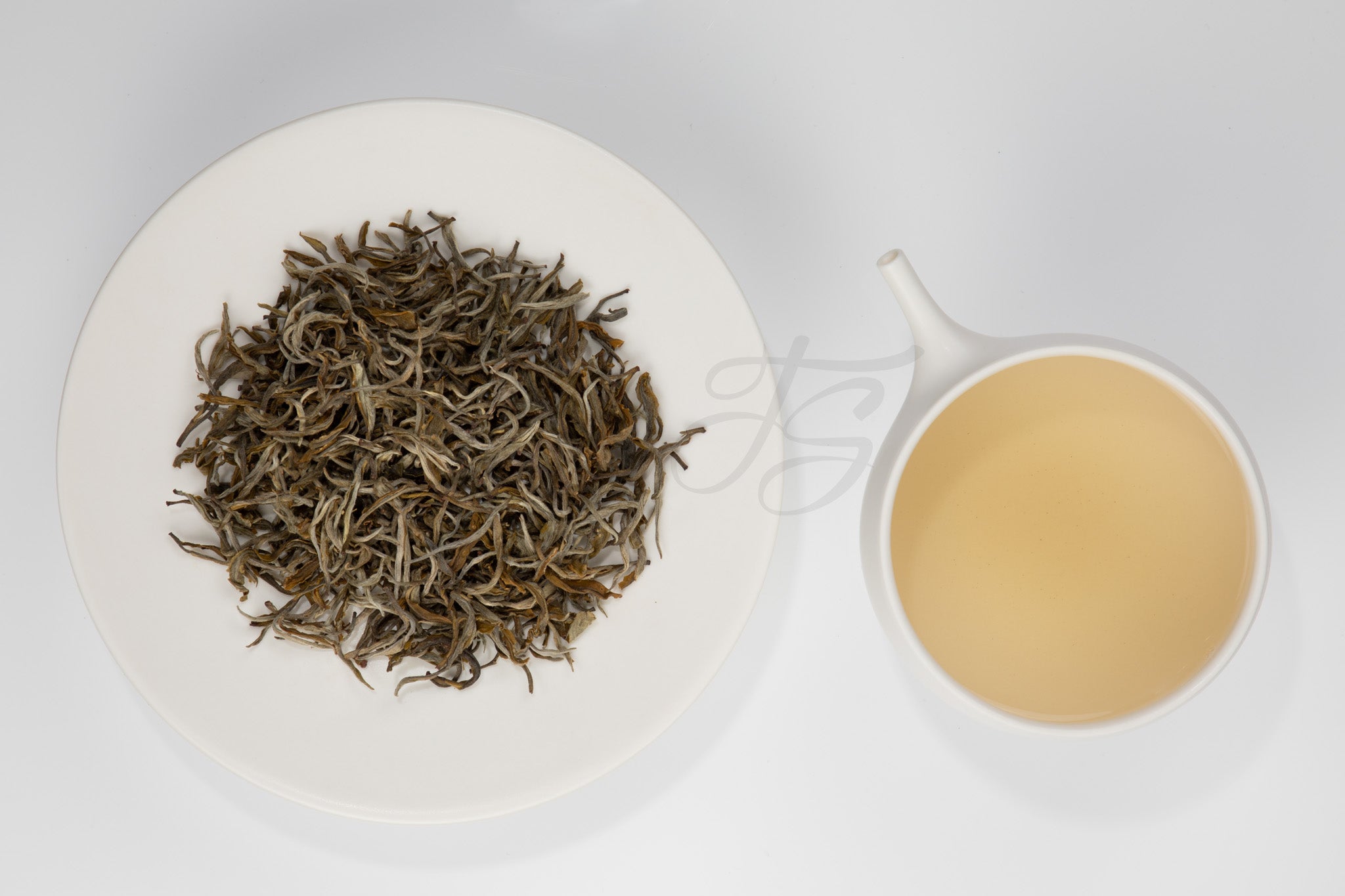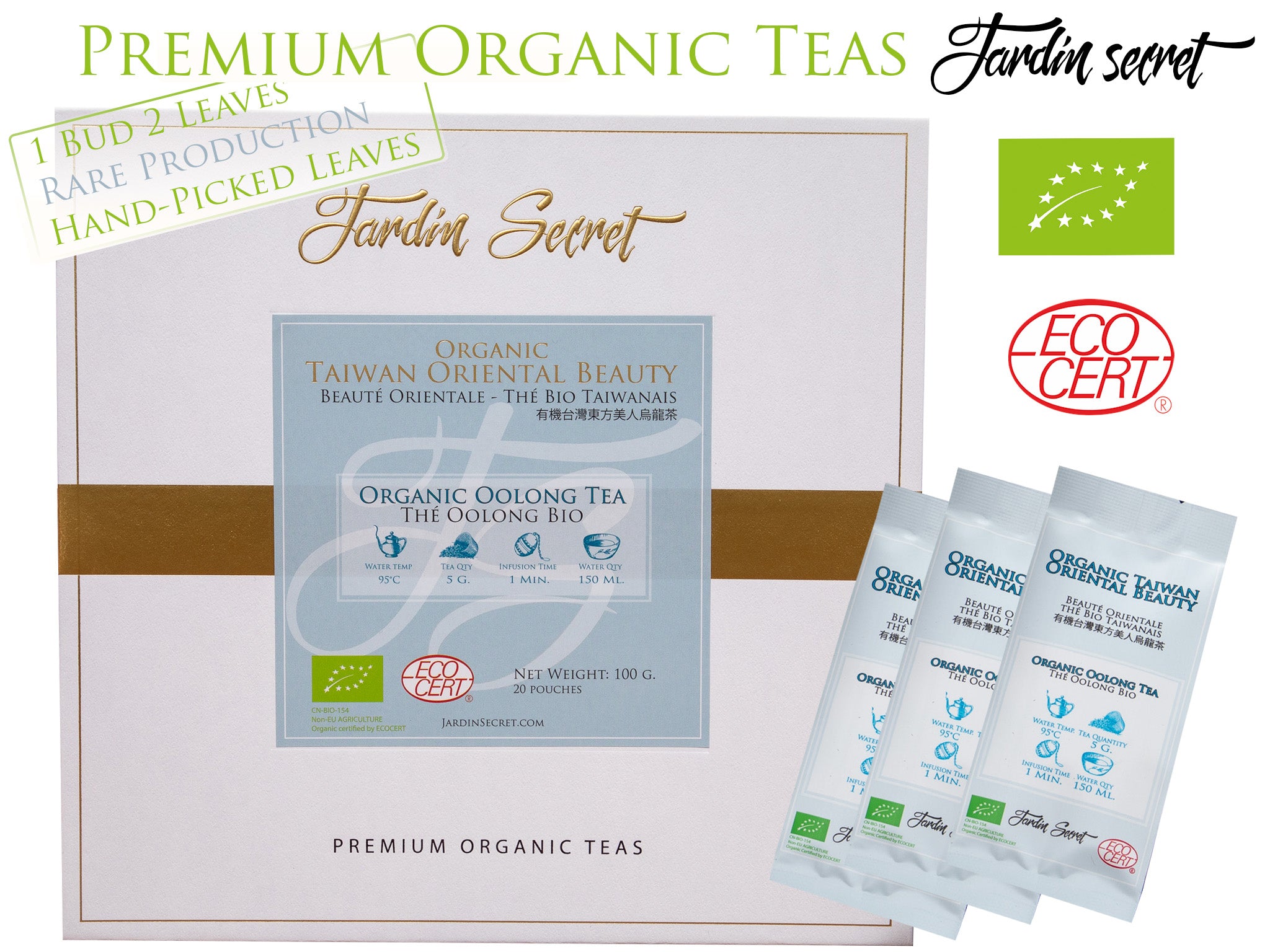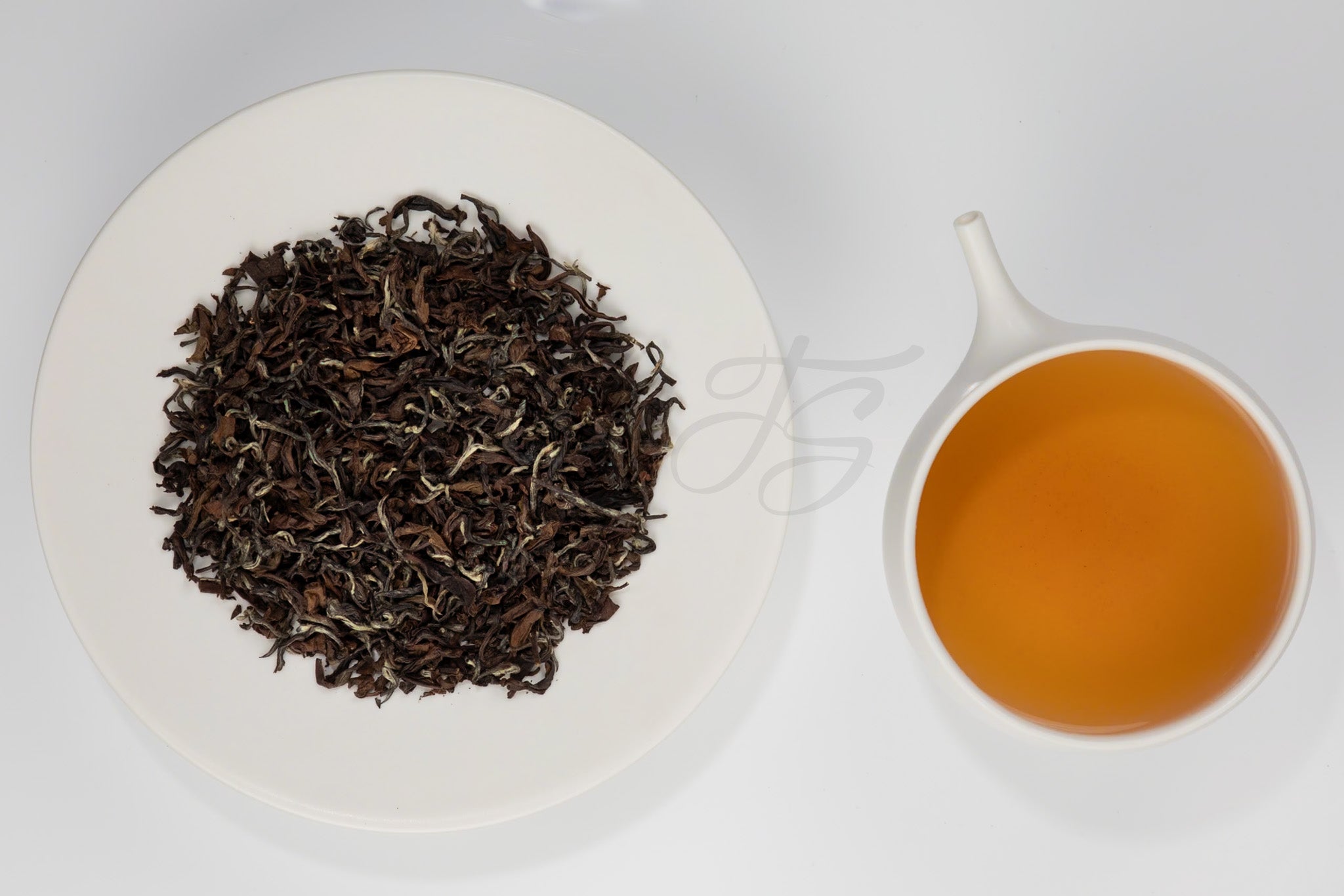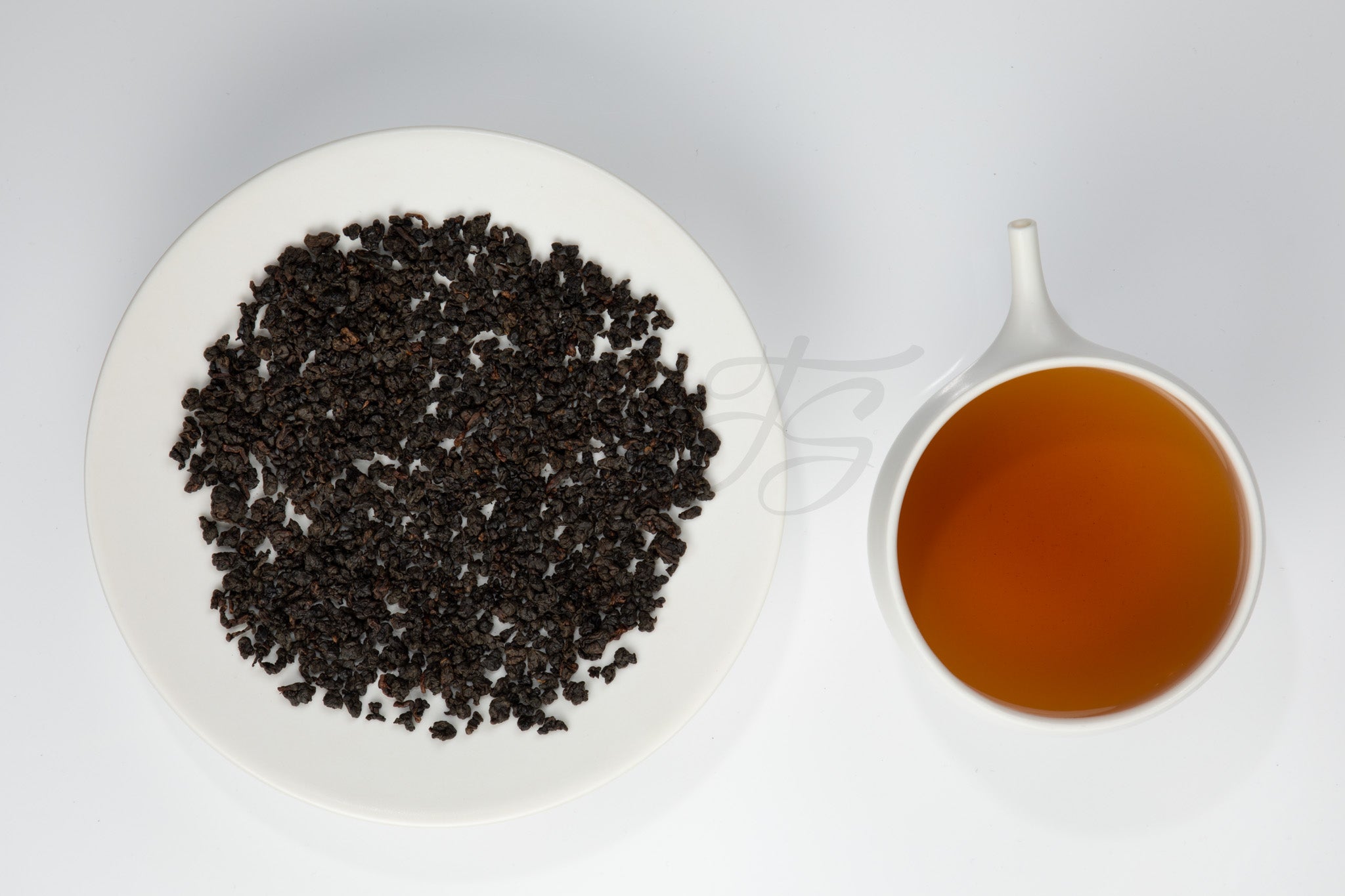
The Characteritics of Terroir of Origin
When I think of terroir, I can't help but think of French wines. The word terroir is often seen on labels of French wines as Terroir, Produit du terroir. Terroir refers to the specific characteristics of the environment in which a particular agricultural product is produced. This includes the climate, terrain, soil, altitude or tea varieties, production techniques, and the people involved in the process.
In the context of wine, terroir plays a significant role in the flavor, aroma, and overall quality of the wine. The specific conditions of the terroir, such as the amount of sunlight, the type of soil, and the humidity levels, all contribute to the unique taste of the grapes and ultimately the wine.
Interestingly, the concept of terroir also applies to other agricultural products like tea. The flavor and quality of tea are heavily influenced by the specific terroir conditions of the region in which it is grown. Just like wine, the nuances of the climate, soil, and production techniques contribute to the distinct characteristics of tea from different regions.
In both wine and tea production, terroir is a determining factor in distinguishing the grade of the product and the place of origin. It is through the expression of the terroir that people are able to appreciate the unique and individualistic qualities of agricultural products.
A single tea plantation, a single variety, no blending, no mixing, 100% authentic flavor!
May you savor the authentic tea flavor in your tea cup!
The Locations of our Tea Gardens
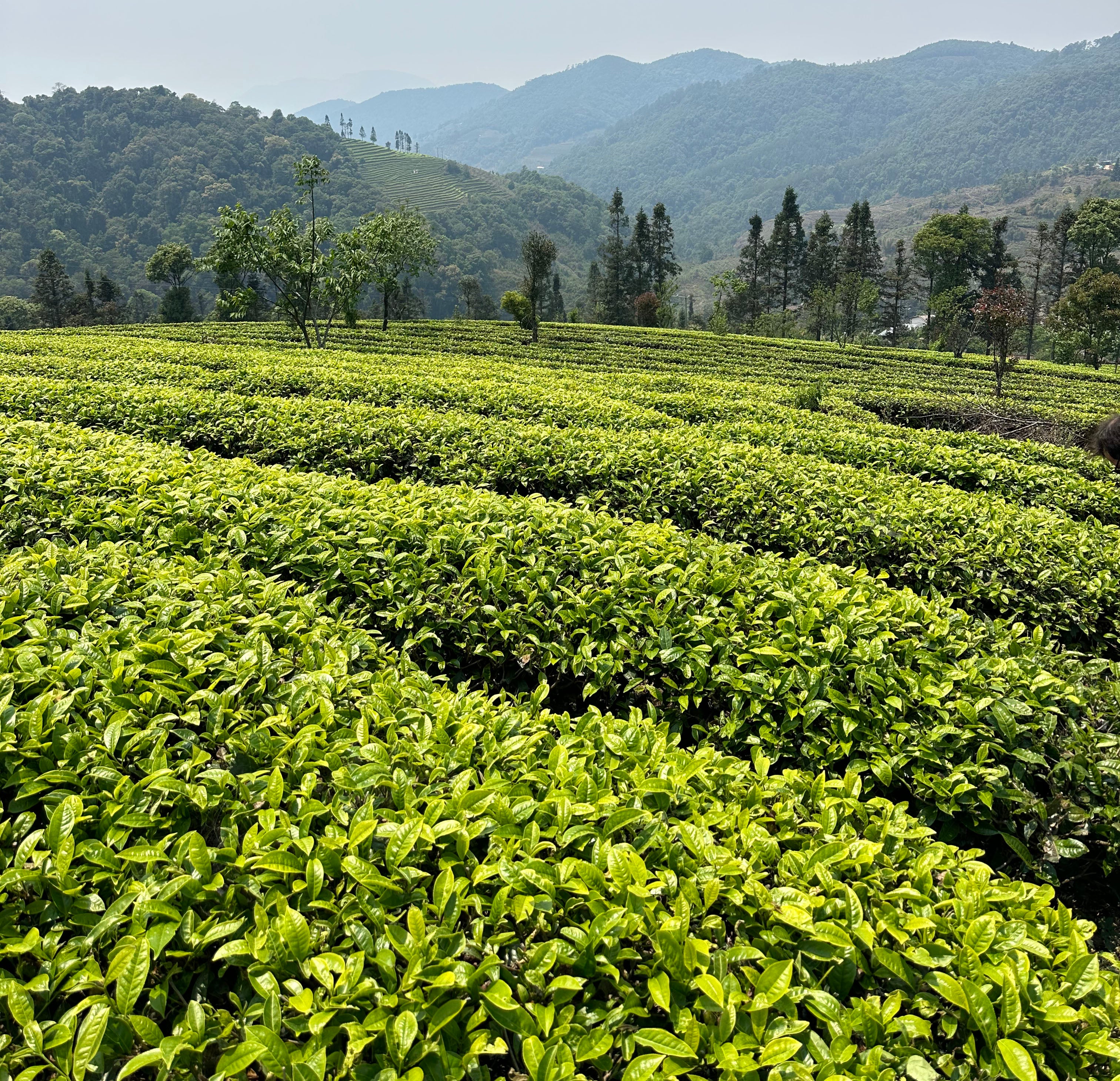
1) Tea Gardens from Yunnan Province, China
Our organic tea garden situated in the neighbouring Xixiangbanna, which is renowned for being the most well-preserved area of China's tropical ecosystem, this garden is “home” to the large-leaf tea trees that produce Pu'er tea.
The tea plantation benefits from an average annual temperature of approximately 18-19 degrees Celsius, owing to its tropical monsoon climate. The annual rainfall, which occurs between May and October, amounts to more than 1,500mm, providing the ideal conditions for the cultivation of organic tea.
All our Yunnan Tea Gardens are located above 1500 meters.
The tea plantation of 'Jade' is a breathtaking sight to behold. Nestled within a virgin forest, this verdant and blooming paradise is a true gem of nature. Standing at the highest point of the plantation, surrounded by mountains with their stretching peaks, one is greeted by a symphony of bird calls, animal noises, and the gentle hum of insects. There is no ordinary farmland or human habitation to be found, and the air is free from any form of pollution.
As one strolls through the tea garden, it becomes apparent that this place is a testament to the continuation of human life that nature provides. The fruits, small wildflowers, green trees, vines, moss, and ferns all display a unique vitality and charm. The organic tea plantation is truly thriving, demonstrating the power and beauty of nature in its purest form.
The climate of the tea plantation, marked by its surrounding clouds and mist, boasts a significant difference in temperature between day and night. This differential creates the ideal environment for the cultivation of tea trees, providing the perfect conditions for their growth.
In experiencing the magnificent beauty of the 'Jade' tea plantation, one cannot help but be inspired to protect and preserve the original intention of nature. It is a sanctuary, a living testament to the harmony and wonder that can be found in the natural world.
The tea cultivated at higher altitudes is highly sought after for its superior aroma and flavor profile, making it a prized commodity in the world of tea production.
The high mountain regions where tea trees are grown are often shrouded in clouds and fog throughout the year. This unique environmental factor has a significant impact on the growth and quality of the tea produced in these regions.
The cloud and fog cover means that the tea trees are exposed to direct sunlight for only a short period of time, with most of the light being diffuse or weak. This is in line with the tea tree's natural preference for shaded environments, as it is well adapted to tolerating shade. The high humidity resulting from the foggy weather further contributes to the ideal growing conditions for tea trees.
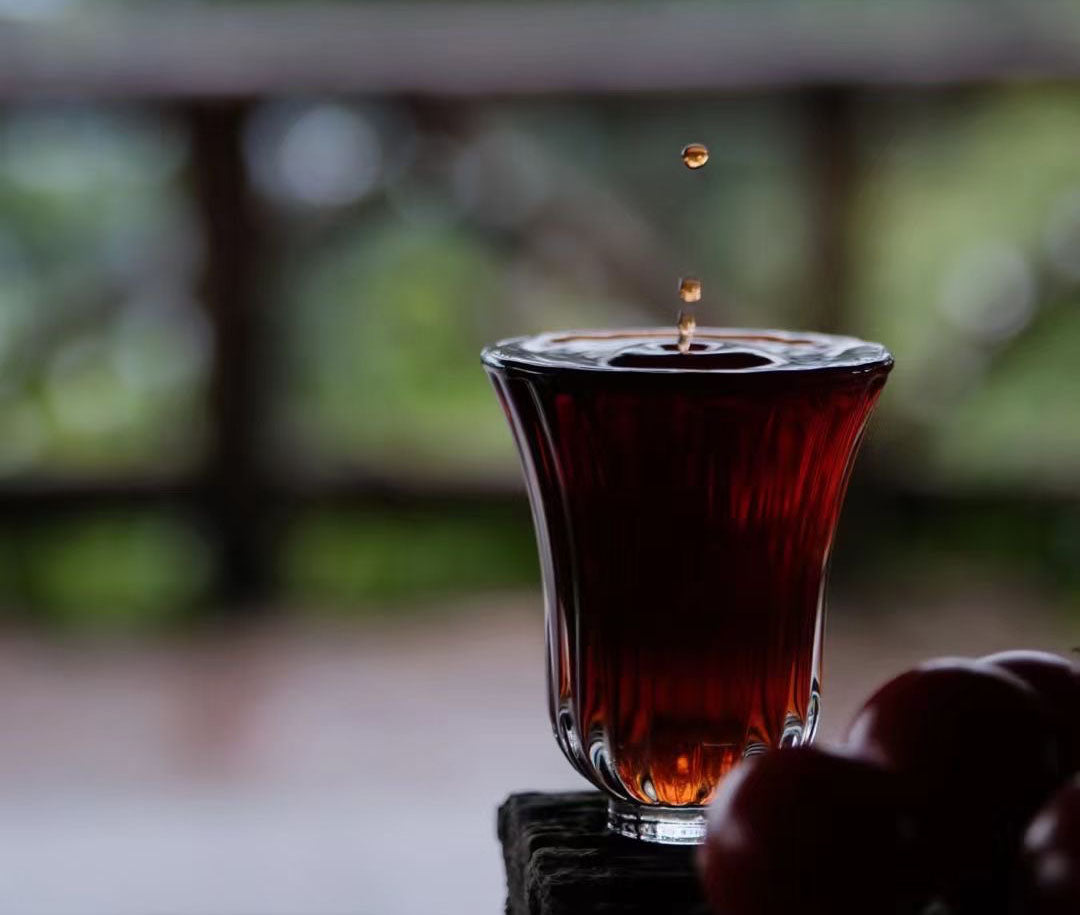
Additionally, the cloud cover blocks long-wave light from reaching the plants, but allows short-wave light to penetrate through to the tea trees. This short-wave light has a strong impact on the synthesis of aromatic substances in the tea leaves, leading to a more robust and flavorful aroma in the tea produced from these regions.
As a result, mountain-grown tea tends to have a stronger aroma and a more complex flavor profile, largely due to the factors influenced by the cloud and fog cover. This unique natural environment creates ideal conditions for the cultivation of high-quality tea.
High mountain tea, also known as high altitude tea, is renowned for its distinct flavor and high quality. One of the key factors contributing to the unique characteristics of high mountain tea is the significant temperature difference between day and night in high mountain areas. This temperature fluctuation creates a favorable environment for the growth of tea leaves.
During the daytime, the high temperature in high mountain areas promotes photosynthesis in the tea leaves, resulting in the formation of more nutrients and improved chlorophyll levels. This process contributes to the overall flavor and quality of the tea. At night, the low temperature slows down the growth of the tea leaves and reduces respiration, leading to the accumulation of essential compounds such as tannin. This temperature difference is essential for the development of the rich and complex flavors found in high mountain tea.
On the contrary, tea grown in low altitude and high-temperature regions tends to be high in caffeine content and bitter in taste. High altitude and low-temperature environments, on the other hand, result in high accumulation of tea catechins, leading to a more refreshing taste.
The characteristics of high mountain tea trees further contribute to their exceptional quality. These trees feature fat, strong, and bright green leaves with a high level of freshness. The processed tea leaves emit a floral aroma, possess high fragrance and strong flavor, and exhibit resistance to brewing. The appearance of the tea leaves is firm with white hairs, adding to the overall visual appeal of the tea.
In conclusion, high mountain tea, derived from altitudes of 1,000 meters and above, is characterized by its rich mountain flavor and exceptional quality. The unique temperature conditions, combined with the distinct characteristics of high mountain tea trees, contribute to the development of its complex and sought-after flavors. As the saying goes, "good tea comes from high mountains", and high mountain tea certainly lives up to this reputation.
Soil in Yunnan
Soil is an essential component of the Earth's surface, and it plays a crucial role in sustaining life and supporting plant growth. In Yunnan province, located in the Yunnan-Guizhou plateau, the soil is predominantly red in color, a characteristic feature of the region. This red soil is formed as a result of the tropical climate of Central Asia, which facilitates the weathering and erosion of minerals and rocks, leading to its distinct coloration. The soil in this region is generally acidic, a factor that influences the type of vegetation that thrives in this environment.
One plant that benefits from the unique soil conditions of Yunnan province is Camellia sinensis var. assamica, which is a species of tea plant known for its strong flavor and high caffeine content. The acidic nature of the soil creates an ideal environment for the growth of this particular variety of tea, making the region a prime location for tea cultivation and production.
Tea Trees Roots
The tea tree has a deep and extensive root system that allows it to draw nutrients and water from the soil. As a result, the tea tree is capable of fully absorbing any nutritional components or chemical fertilizers that are present in the soil. This can have both positive and negative implications for the quality of the tea produced from these plants.
On one hand, if the soil is rich in nutrients and free from harmful chemical fertilizers, the tea tree will absorb these beneficial components, resulting in a high-quality, flavorful tea. On the other hand, if the soil contains an excess of chemical fertilizers or other contaminants, the tea tree will absorb these as well, potentially leading to a lower-quality or even harmful tea.
Healthy tea tree roots are essential for producing high-quality tea with pure aroma and flavor. The root care of tea trees is often an overlooked aspect of tea production, but it plays a crucial role in determining the overall quality of the tea leaves.
Clean Teas
Quality is a highly sought-after factor in any product, especially in the case of food and beverages. When it comes to tea, the quality is closely related to several factors that undoubtedly affect the overall experience of consuming the beverage.
One of the factors that greatly impact the quality of tea is the use of pesticides and chemical fertilizers in the growth and cultivation of tea leaves. For instance, the pesticide sprayed by the tea growers will remain on the tea leaves and veins of the tea trees. Similarly, the chemical fertilizers sprinkled on the tea trees will be absorbed by its roots and manifested in the flavor of the tea soup.
I recently had an experience with a high-quality Oriental Beauty Oolong Tea given to me by a friend. She assured me that it was pesticide-free, and I was eager to taste it. However, upon brewing, I noticed a strong aroma in the first few infusions, followed by a salty aftertaste. This was a clear indicator that chemical fertilizers were likely used in the cultivation process.
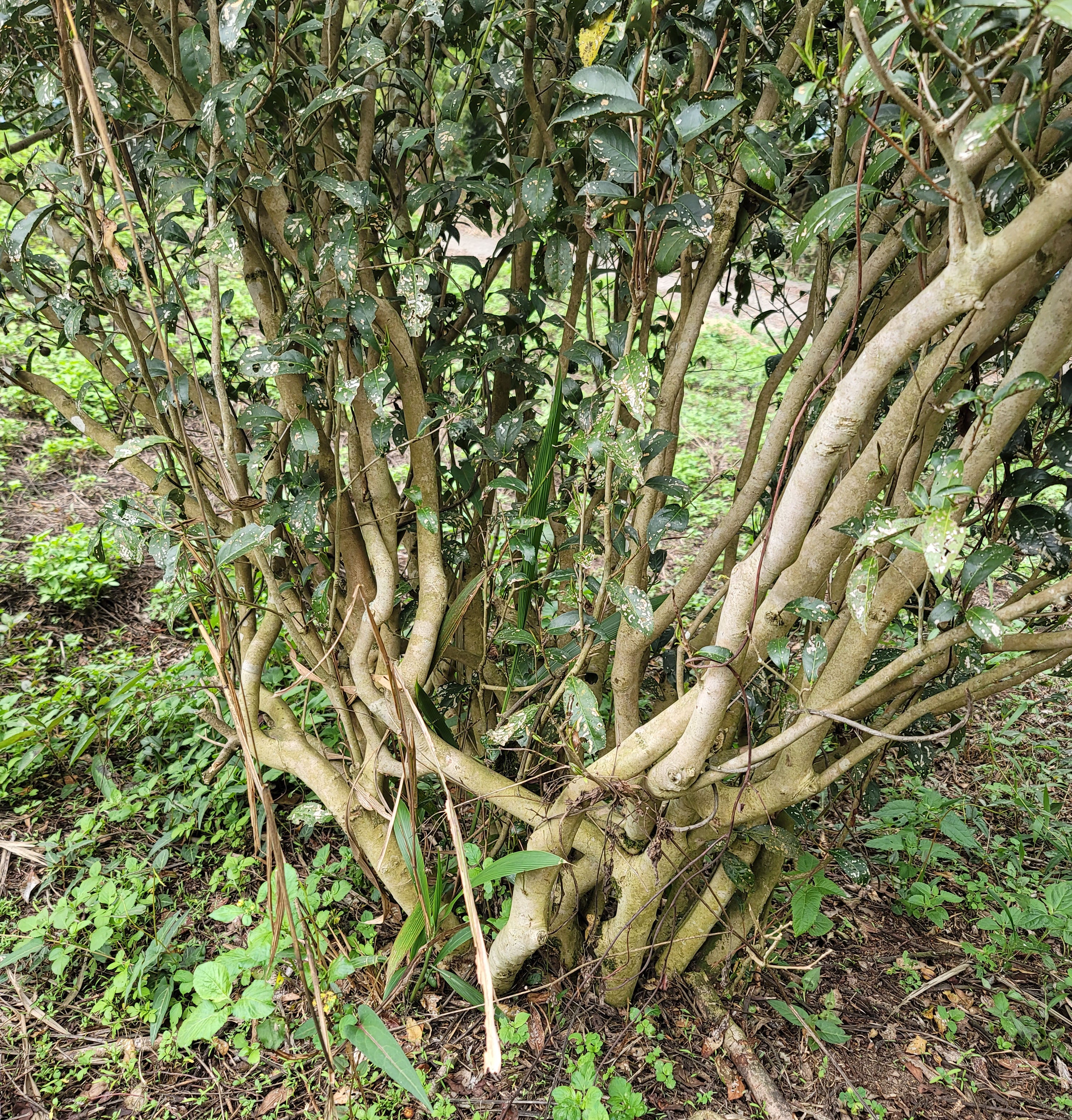
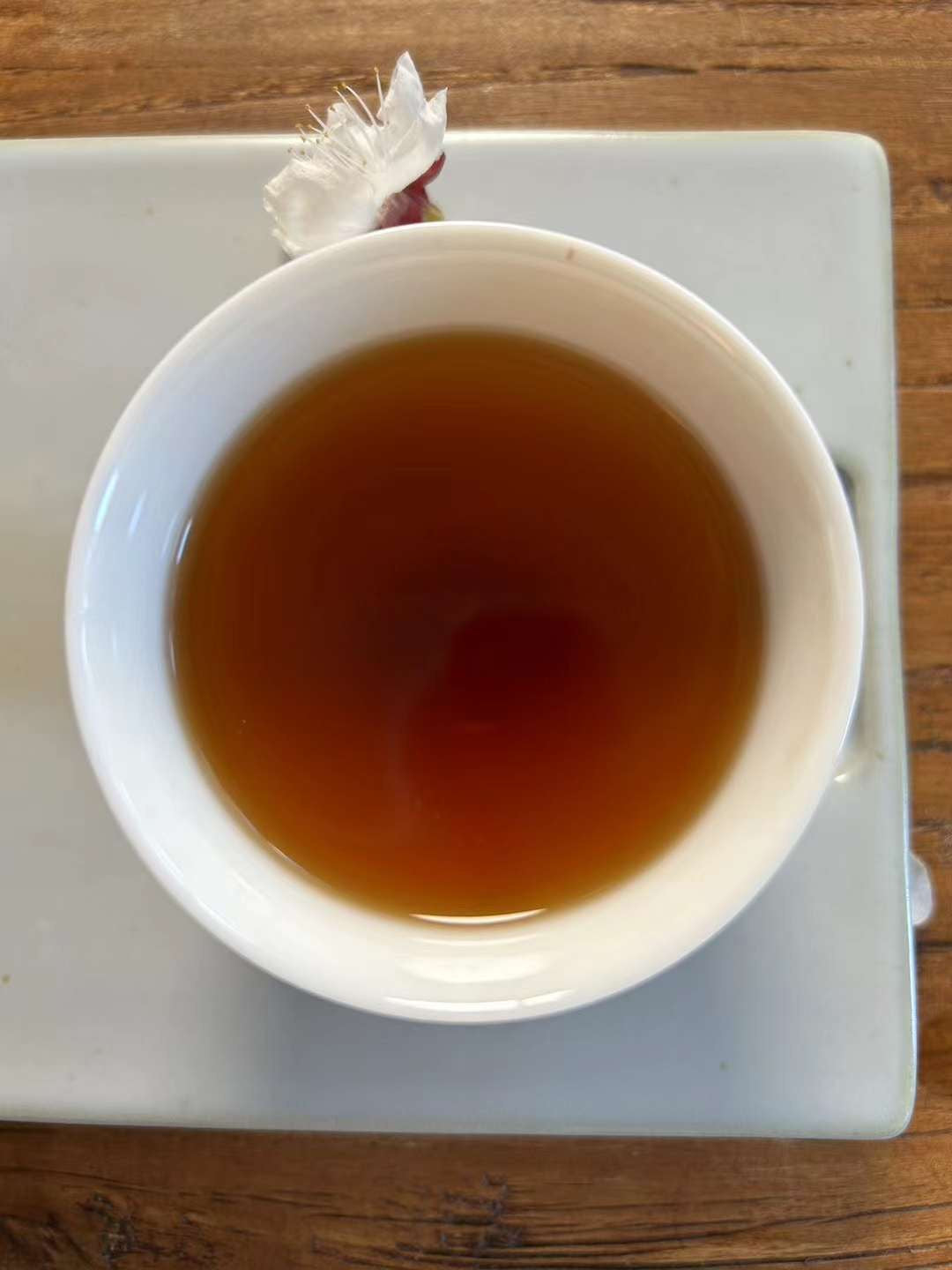
Thés organiques premium du Yunnan
2) Tea Gardens from Taiwan
Taiwan is known as the core of Oolong tea production regions, and for good reason. The tea mountain in the central region of Taiwan is surrounded by clouds and mist, with continuous mountain ranges, mountain streams, Riyue Lake Reservoir, and bamboo forests.
This charming and picturesque scenery creates a mountainous atmosphere that is the most suitable environment for tea trees to thrive. The diverse biota in the area, including mountain pigs, tree frogs, wasps, spiders, butterflies, egrets, and green bamboo snakes, adds to the unique ecological balance of the region.
The tea gardens in this area are managed using a primitive method known as the Wild Tea Tree Management Method. This hands-off approach results in high-quality tea trees, with minimal external interference and a natural ecological balance that requires only regular weeding and watering.
Taiwan's native tea tree species is a large-leafed tree, but over time, the effects of climate and environment have caused the trees to evolve, resulting in smaller branches and leaves.
This evolution has lead to the development of a group of Taiwan Oolong Tea Plantations with a unique flavor profile, making them highly sought after in the tea market. The age of the tea trees in the region ranges from 10-25 years, further contributing to the distinct taste and aroma of the Oolong tea produced in Taiwan.
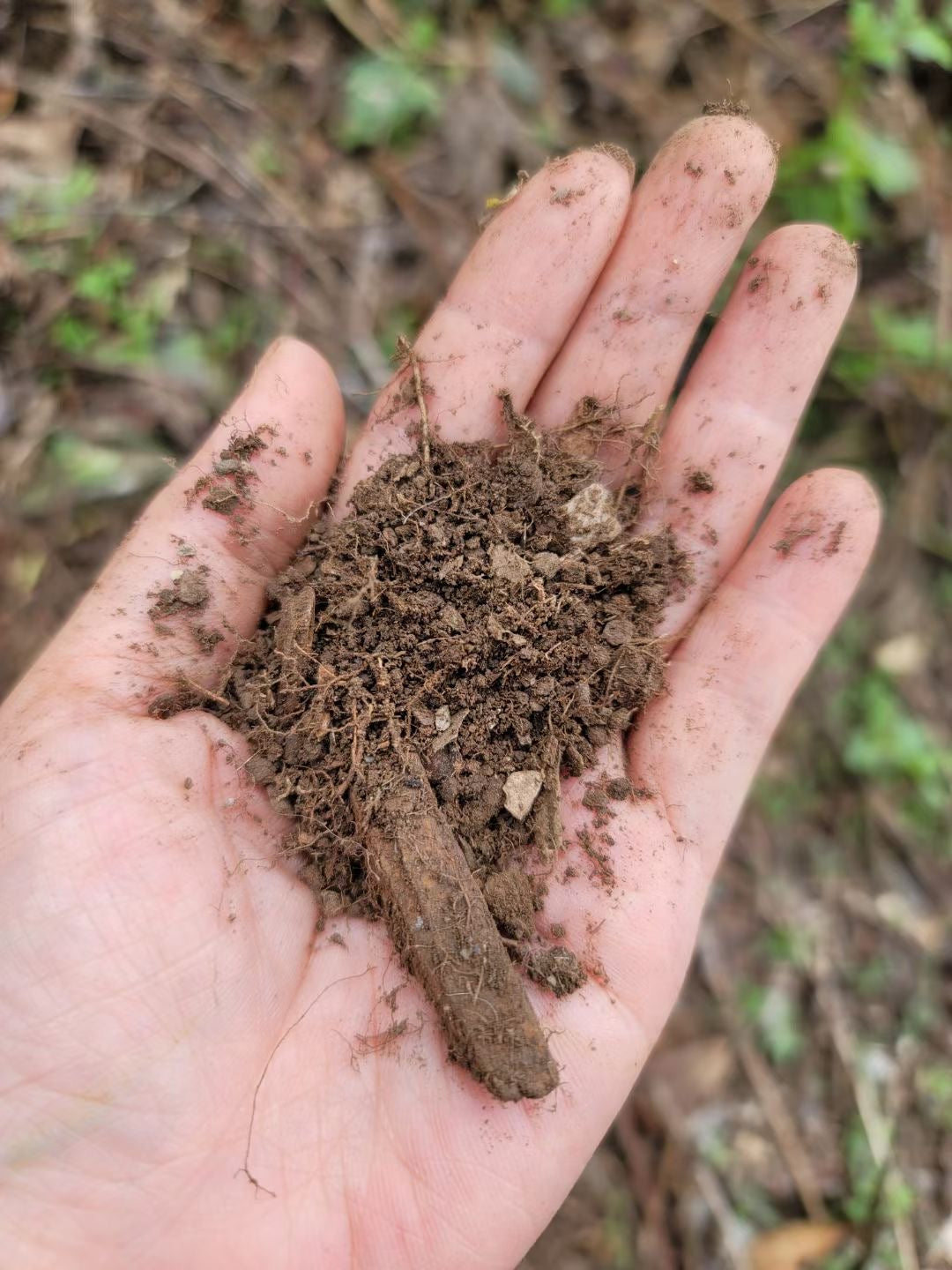
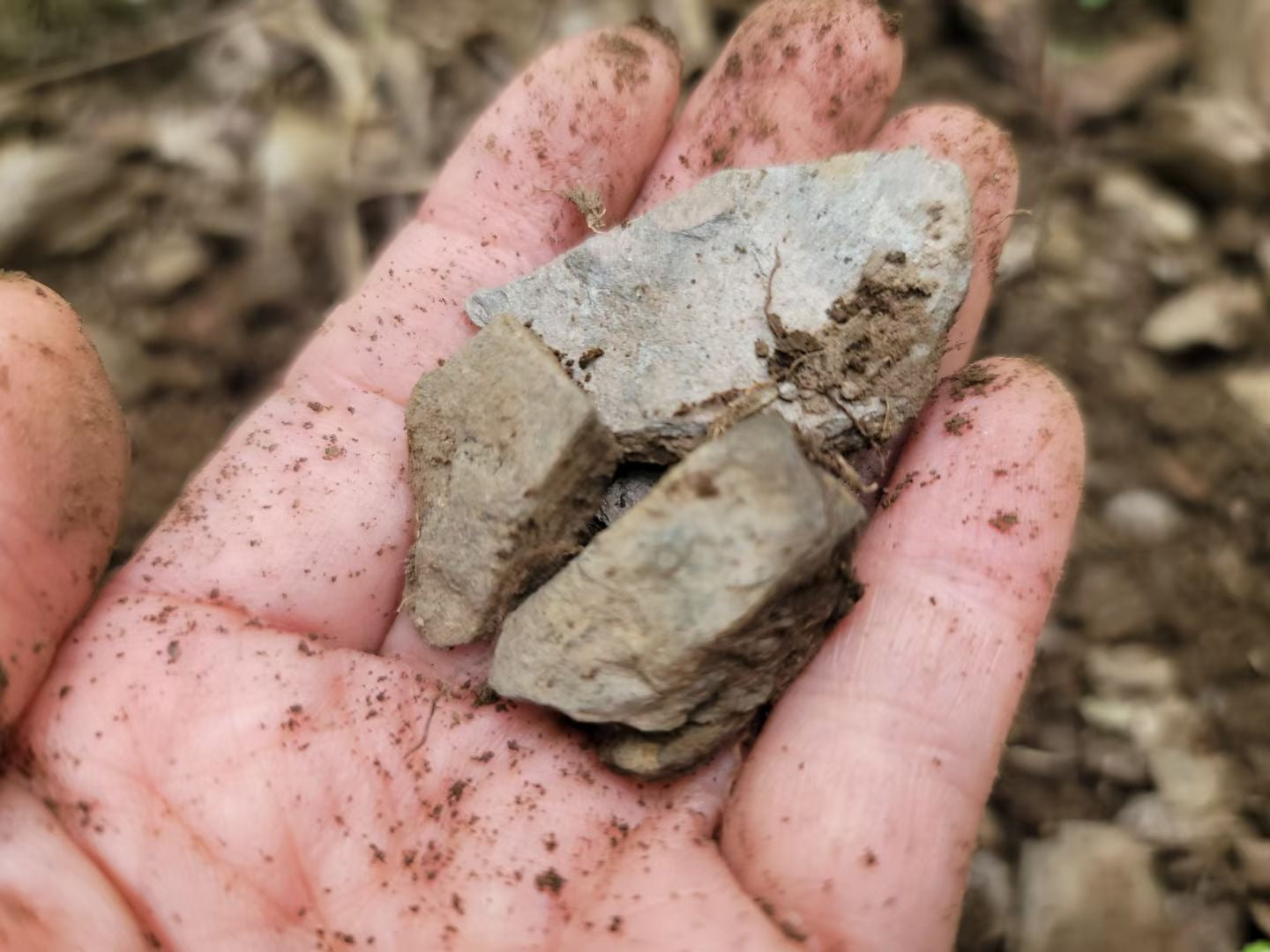
Stony Soils
Stony Soil contain some stone shard.
Soil composition plays a vital role in the cultivation of Oolong teas, and the presence of more stone shards can greatly impact the quality of the tea. While Oolong tea plants thrive in well-draining, mineral-rich soil, an abundance of stone shards can present both benefits and challenges to the tea-growing process.
On the one hand, soil with more stone shards promotes good drainage, which is essential for Oolong tea plants to thrive. Excess water retention can lead to root rot and stunted growth, so the presence of stone shards can help to prevent these issues and maintain the health of the plants. Additionally, the mineral content in the stone shards can contribute to the overall nutrient levels in the soil, promoting strong, healthy growth of the tea plants.
Thés biologiques premium de Taiwan
Our tea gardens implement ecological chain management method.
1) What is Ecological Chain?
The ecological chain, also known as the food chain, is a fundamental concept in ecology that illustrates the interconnectedness of various organisms within an ecosystem. It demonstrates the transfer of energy and nutrients from one organism to another, highlighting the dependencies and relationships that exist between different species.
In the context of a tea plantation, the ecological chain encompasses a diverse array of organisms including insects, birds, small mammals, and micro-organisms, as well as the tea plants themselves. Each organism plays a specific role in the ecosystem, whether it be as a primary producer, herbivore, predator, or decomposer. For example, insects may pollinate the tea plants, while certain birds and mammals may feed on these same insects, and so on.
This intricate web of interactions ultimately contributes to the overall health and stability of the tea plantation ecosystem. Disruptions or imbalances within the ecological chain can have far-reaching consequences, potentially leading to declines in biodiversity, decreases in crop yields, and overall ecosystem degradation.
Recognizing the importance of the ecological chain in maintaining the sustainability of tea plantations is crucial for implementing effective conservation and management strategies. By understanding and respecting the delicate balance of the ecological chain, we work towards creating a more harmonious and resilient environment for both the tea plants and the surrounding wildlife.
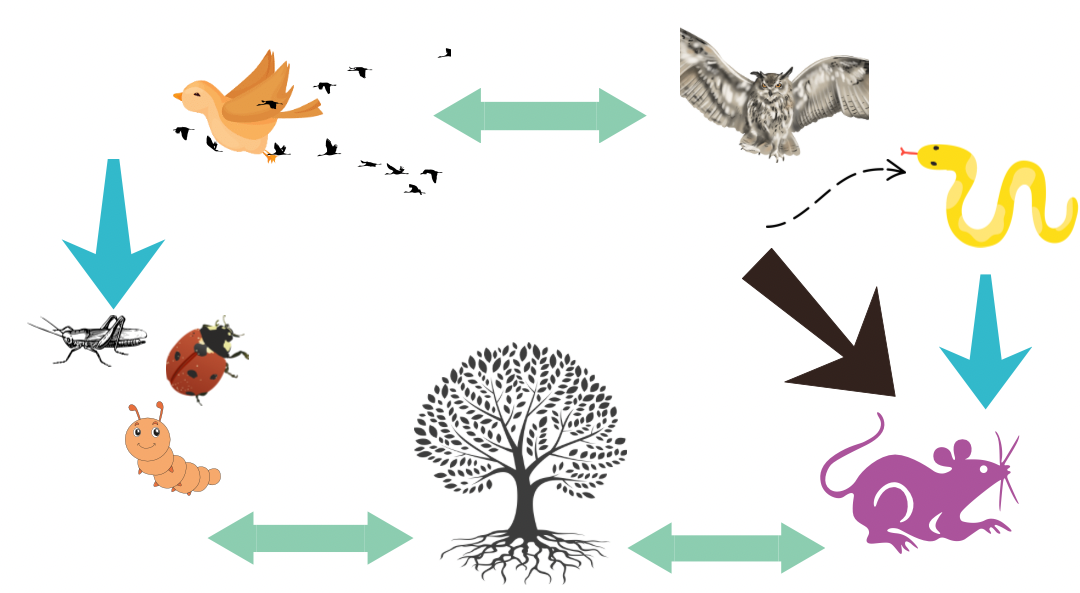
Example of ecological chain:
An ecological chain is a series of interconnected organisms that rely on one another for food and survival. One example of an ecological chain is the tea tree ecosystem. The leaves of the tea tree provide food for insects such as caterpillars and aphids. These insects, in turn, become a source of food for birds such as sparrows and finches. With the presence of birds in the ecosystem, larger predators like eagles and snakes are attracted to the area.
The presence of eagles and snakes serves an important purpose in the ecosystem. These predators help to control the population of rodents such as rats. Without the presence of eagles and snakes, the rat population would quickly multiply, causing damage to crops and potentially spreading diseases harmful to mankind.
This example showcases the interconnectedness of all organisms within an ecosystem. Each organism plays a crucial role in the chain, from the tea tree providing food for insects, to the birds feeding on the insects, to the larger predators controlling the rodent population. If one link in the chain were to be disrupted, the entire ecosystem would be affected. The tea tree ecosystem demonstrates how each organism, no matter how small, contributes to the overall balance and health of the environment.
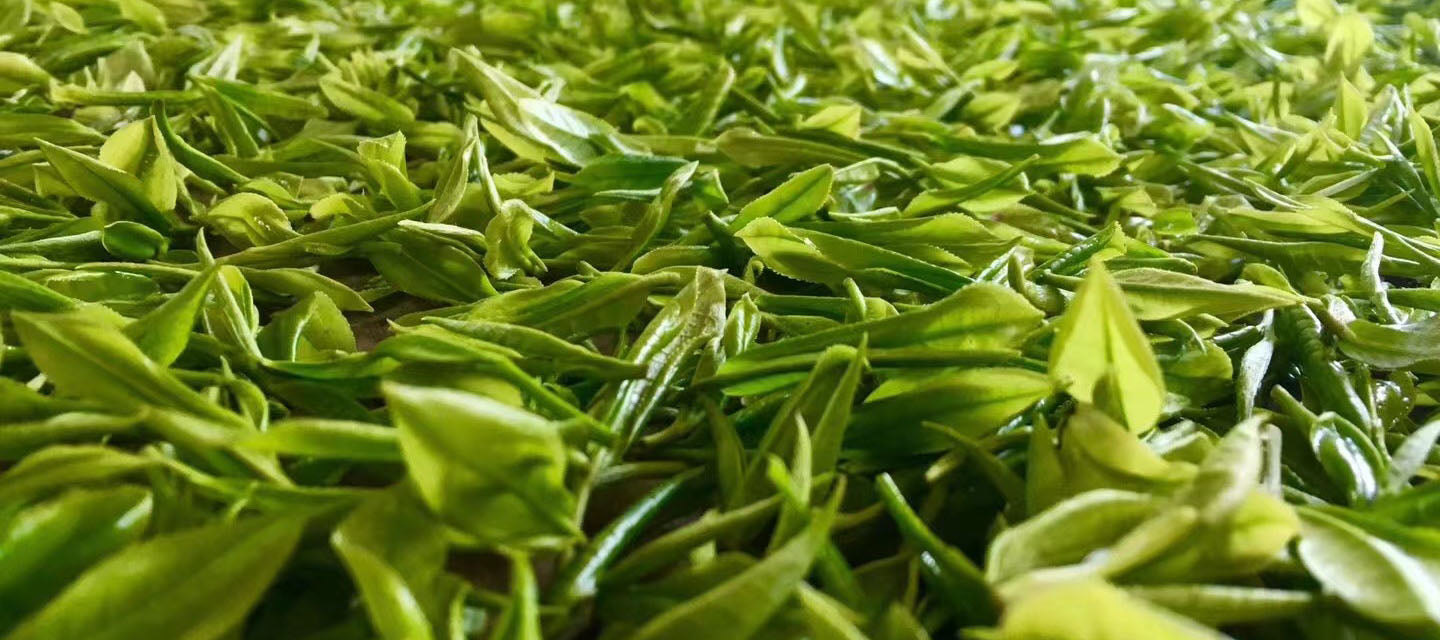
The old leaves of the tea tree fall and return to their roots during the natural process of decomposition. As these leaves break down, they release essential nutrients back into the soil, providing the tea tree with the necessary components for continued growth. Additionally, animal droppings and carcasses also contribute to the replenishment of the soil. When these organic materials decompose, they release valuable substances that provide the tea tree with sufficient nutrients to sustain its health and growth.
This process of decomposition is made possible by the actions of micro-organisms in the soil. These micro-organisms break down the organic matter, transforming it into a form that can be taken up by the tea tree roots.
As a result, the nutrients are made readily available for the tea tree, enabling it to continue producing new leaves.
Through this natural cycle, a healthy ecological chain is established. The tea tree provides a habitat for animals, whose waste and remains contribute to the rejuvenation of the soil. In turn, the soil provides the tea tree with the necessary nutrients to grow and thrive. This continuous cycle of decay and renewal ensures the sustainability of the tea tree and its surrounding ecosystem, demonstrating the interconnectedness and interdependence of all living organisms in nature.
Our Golden Rule
We don’t disrupt, we provide minimum interference by just watering and weeding regularly.
2) A loss of balance in the ecological chain has serious consequences
The loss of balance in the ecological chain has serious consequences that affect every living being on this planet. The declining population of insects, particularly bees, has led to a significant decrease in the production of agricultural products in many regions. This is due to the vital role that bees play in the pollination of plants, and their dwindling numbers have disrupted this essential process.
In addition to natural factors such as climate change, human activities such as the widespread use of pesticides and chemical fertilizers have also contributed to the decline in insect populations. Furthermore, the radio interference from cell phones has been found to disrupt the bees' ability to navigate, leading to a large number of casualties.
The ramifications of this imbalance in the ecological chain are far-reaching. A reduction in agricultural production not only affects food availability and prices but also impacts the overall health and biodiversity of ecosystems. Furthermore, the loss of bees and other insects can have secondary effects on animal and plant species that rely on them for food and pollination.
It is crucial that we recognize the importance of maintaining a balanced ecological chain and take steps to rectify the damage that has been done. This may require changes in agricultural practices, conservation efforts, and stricter regulations on harmful substances. The preservation of our natural world depends on our ability to restore the equilibrium of the ecological chain.
No Hunting
The no hunting policy at our tea plantation is of utmost importance in preserving the natural ecological balance of the environment. Our location is blessed with a rich and diverse ecosystem, and it is our duty to ensure that we do not disrupt it in any way.
Hunting of any kind is strictly prohibited within the tea plantation premises. This includes the catching of snakes and birds, as well as the killing of any small animals. This zero-tolerance policy is in place to protect the delicate ecological balance that exists within our plantation. By upholding this no hunting policy, we are able to create a safe and natural haven for the wildlife that call our plantation home.
Fertilizers Applied
Fertilizers play a crucial role in the cultivation of crops, as they provide essential nutrients to the soil, promoting plant growth and enhancing crop yields. In the context of tea plantations, various types of fertilizers are commonly used to maintain the health and vigor of the tea plants. One such example is the use of organic tea stalks and tea powder as fertilizers, which are derived directly from the tea plantation itself. These organic materials not only provide essential nutrients to the soil but also contribute to the overall sustainability and eco-friendliness of the tea production process.
Additionally, weeds that are plucked from the tea plantation can also be utilized as fertilizers or organic fertilizers. These natural materials can be composted and returned to the soil, enriching it with organic matter and nutrients, thus supporting the healthy growth of the tea plants. It is important to note that in some our tea gardens, no additional fertilizers are applied, as the plants are allowed to grow naturally without any intervention. The use of natural and organic fertilizers in tea cultivation not only ensures the health and quality of the tea plants but also reflects a commitment to sustainable and environmentally-friendly agricultural practices.
Water Source for irrigation
we understand the critical importance of using high quality water for irrigation to ensure the healthy growth of our tea trees.
To achieve this, we bring in high quality spring water from the mountains near our plantations. This pristine water source is rich in essential minerals and nutrients, which are beneficial for the growth and development of the tea plants. By ensuring that the water used for irrigation is of the highest quality, we are able to support the overall health and vitality of our tea plantations, ultimately leading to the production of high-quality tea leaves.
Additionally, utilizing spring water for irrigation helps to maintain the natural balance of the ecosystem within the plantations, as it minimizes the impact of chemicals and pollutants on the environment.
By prioritizing the use of high-quality spring water for irrigation, we are able to uphold the standards of excellence that define our tea production, and contribute to the sustainable growth of our plantations.
Weeding
Grass is a very fast-growing plant that often competes with the tea garden for vital nutrients and resources. However, at our tea garden, we have chosen to tackle this issue without the use of herbicides. Instead, we opt to weed by hand, ensuring that the natural balance and health of the tea garden are maintained.
We believe that using herbicides would not only harm the environment but also negatively impact the quality of the tea produced. By hand-pulling the grass in and around the tea garden, we can carefully and selectively remove the unwanted plant growth without causing any harm to the surrounding ecosystem. This method allows us to maintain a healthy and biodiverse environment that is crucial for producing premium organic tea.
Furthermore, the grass that we pull down is not wasted. Instead, it is utilized as fertilizer and then returned to the tea garden to nourish the soil. This sustainable practice not only helps to maintain the fertility of the soil but also reduces waste and promotes a circular and eco-friendly approach to farming.

Manual Grass Laying
Manual grass laying is a traditional agricultural practice that has been employed by tea farmers for generations to enhance the growth of tea trees. This manual technique involves carefully cutting grass and laying it on the roots of tea trees in order to inhibit the growth of new grass. By doing so, the new grass buds are deprived of sunlight, effectively hindering their ability to sprout and grow. In addition to impeding the growth of new grass, the grass that is laid on the roots of the tea trees serves as an organic fertilizer as it decays. This natural fertilizer not only enriches the soil and provides essential nutrients for the tea trees, but also aids in moisture retention and prevents soil crusting.
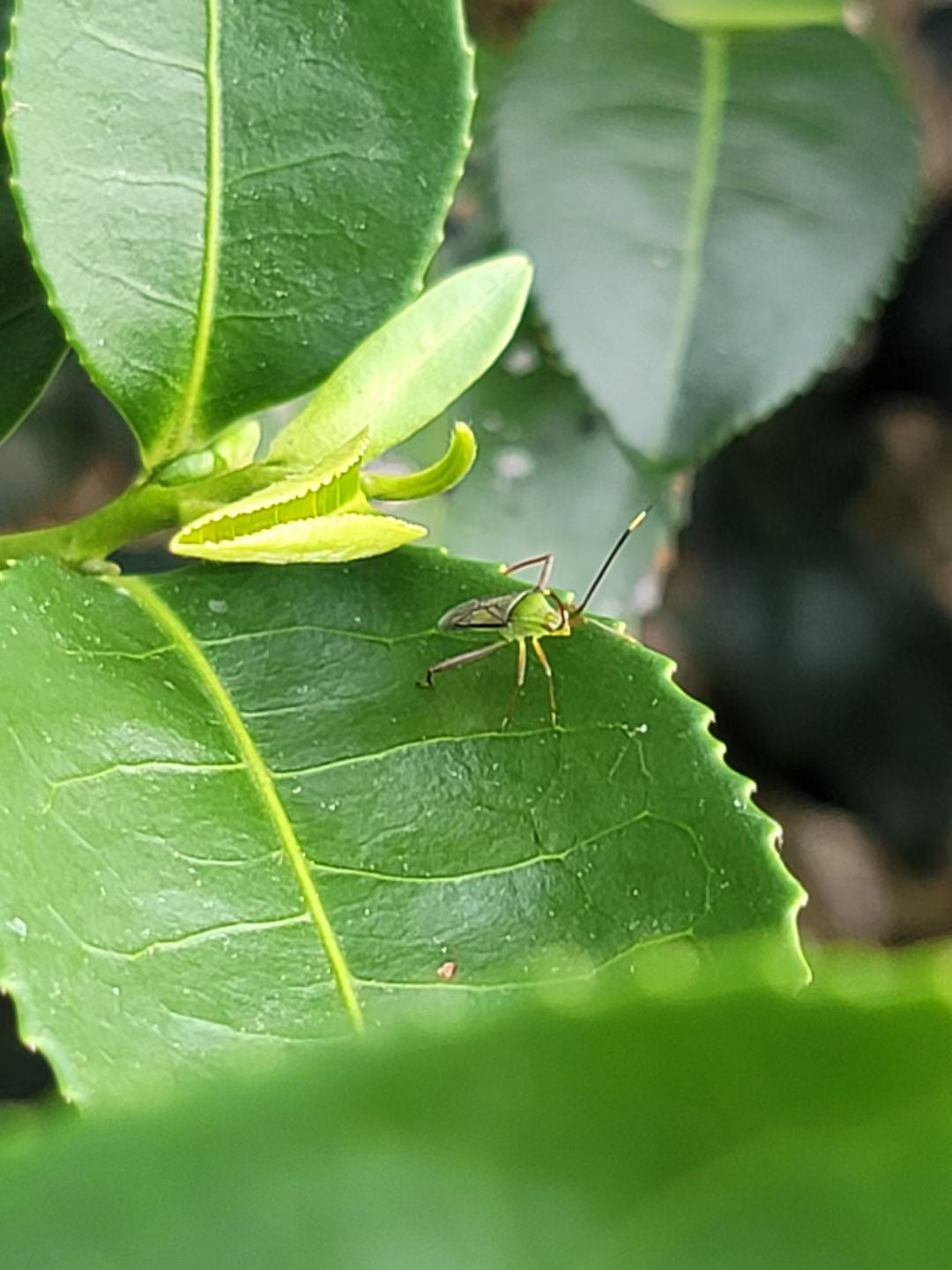
Pest Control
Growing organic tea is indeed a challenging task. The inability to use pesticides on the entire tea plant often leaves tea growers feeling helpless as they struggle to find alternative methods to combat pests without harming the beneficial insects. This delicate balance in the ecosystem of a tea plantation requires a thoughtful and sustainable approach to pest control.
At our tea plantation, we have established a balanced system of organic plantation ecological chain, which has created a nurturing environment for a diverse range of natural enemies that help control pests. The presence of birds, spiders, frogs, and ladybug beetles within and around the plantation has proved to be an effective method of pest control, without the need for harmful chemical interventions.
This colorful and vibrant ecosystem within our tea plantation is a testament to the successful coexistence between humans and nature. It is a visual representation of the harmonious relationship we strive to achieve with our environment, emphasizing the importance of sustainable and organic practices in agriculture.
While growing organic tea may not be easy, the rewards of preserving a healthy and thriving ecosystem far outweigh the challenges. It is a testament to our commitment to sustainability and the well-being of our planet.
Solar lamps have become an increasingly popular and environmentally friendly option for exterminating pests at night in various settings, including tea gardens. By harnessing the unlimited solar energy during the day, solar lamps can effectively exterminate pests at night without wasting resources or contributing to environmental degradation. This sustainable approach to pest control not only helps to safeguard the tea garden's ecosystem but also reduces the reliance on traditional energy sources.
In addition to solar lamps, sticky boards are also utilized in tea gardens, particularly during the warm season when small bugs such as green leafhoppers pose a threat to the tea plants. These sticky boards serve as a natural and non-toxic method of controlling the population of these pests without harming the surrounding environment. This approach is in line with organic farming principles and helps in preserving the ecological balance within the tea garden.
It is worth noting that in some areas of the tea garden, such as the Oriental Beauty tea area, no measures are taken to kill insects at all, thus allowing for the natural regulation of pest populations. This conscientious approach not only aligns with sustainable and eco-friendly practices but also contributes to the production of high-quality tea.
In recent years, the tea industry has been facing increasing challenges from insect infestation. Pesticides and insecticides have been the primary method used to control these pests, but their long-term effects on the environment and the quality of tea leaves have raised concerns. As a result, there has been a growing interest in exploring more sustainable and natural methods of insect control in the tea gardens.
One such method that has gained traction is the planting of insect repellent trees in and around the tea garden. Trees such as the camphor tree and lamp tree emit a unique fragrance that is known to repel insects. By incorporating these trees into the tea garden, not only can we benefit from their natural insect repellent properties, but they also bring the unique mountain air to the tea leaves, enhancing their overall flavor and quality. Additionally, these trees provide much-needed shade to the tea trees in the scorching summer months, protecting them from heat stress and ultimately promoting healthier growth.
Tea Quality Control
Product quality control is an integral part of ensuring the overall success and satisfaction of the consumer. This is particularly true in industries such as the food and beverage sector, where the health and safety of the consumer are of utmost importance. In the case of tea production, meticulous attention to detail throughout every stage of the process is essential to guarantee the highest standard of quality.
From the moment the tea leaves are harvested to the final sale of the product, every step of the journey is closely monitored and controlled. Our commitment to quality begins with the careful selection of the finest tea leaves, followed by a rigorous processing and packaging process. Each batch of tea is then carefully transported and distributed, with thorough documentation and recording of every code and detail.
By adhering to strict standards and regulations, we not only ensure the hygiene and safety of the product but also maintain the integrity and reputation of our brand. Our dedication to product quality control is further underscored by our ability to track the origin of each batch of tea, thereby providing transparency and accountability to our consumers.
Ultimately, our unwavering attention to quality control serves as a testament to our commitment to providing the highest-quality product to our valued customers.
